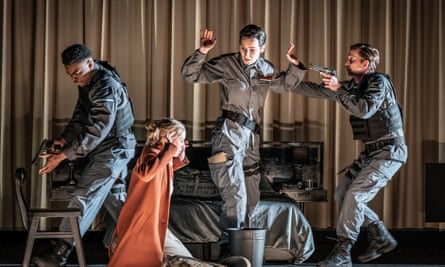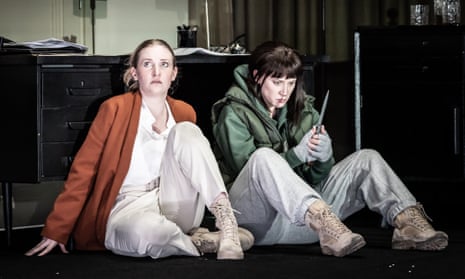There is no such thing as a neglected Handel opera these days, but Arminio comes pretty close. On this evidence it is hard to see why. The setting is dramatic, the plot darkly compelling, the hero one of the great icons of German history and the score contains occasional top-notch Handel. This new production, in the Royal Opera’s smaller downstairs theatre, brings Arminio back to Covent Garden, where it was premiered in 1737.
Staging and music are mostly in the hands of members of the Royal Opera’s Jette Parker Artists programme. Past projects of this kind have sometimes struggled to find their stride, but that can’t be said this time. There is impressively confident artistic smartness from the start in Mathilda du Tillieul McNicol’s direction and Noemi Daboczi’s sets and costumes. They give the opera’s military and political settings contemporary zing without ripping up its classical roots. The set initially evokes a hospital ward, and the curtains move back and forth to keep the narrative pace admirably brisk, which is not easy in Handel.
Vocal standards range from good to high. In the title role, the Lithuanian mezzo Gabrielė Kupšytė gives dignified and well-modulated accounts of two of the opera’s many reflections on death in her arias Duri lacci and Vado, vado a morir. Kamilla Dunstan as Ramise and, in particular, Isabelle Peters as Sigismondo bring obvious promise and secure techniques to Handel’s demanding writing, with Peters particularly impressive in the act two aria Quella fiamma, where Katharina Spreckelsen’s oboe solo also stood out. The Canadian soprano Sarah Dufresne, as Arminio’s husband Tusnelda, had fine tone, a bright top of the voice and a real feeling for text.

Although Arminio is an opera in which women’s voices have much of the limelight, the strongest characterisation of all comes from Korean baritone Josef Jeognmeen Ahn as the collaborator Segeste. He commands the stage better than anyone, with incisive diction, secure tone and real presence. Kamohelo Tsotetsi makes a strong and characterful impression as Tullio, while tenor Michael Gibson is the dignified but doomed Roman general Varo.
Arminio is not Handel’s most original score – he wrote it in a month, while simultaneously working on two others, Berenice and Giustino. But it contains plenty of rewards, mainly in the second and third acts. In the pit, directing the orchestra of the Early Opera Company, London debutant André Callegaro keeps things moving well in this thoroughly recommendable rarity.
